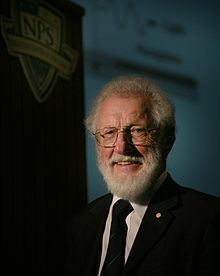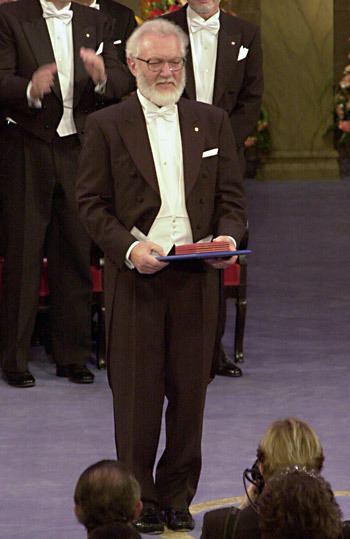Residence United States Name Herbert Kroemer | Role Physics researcher | |
 | ||
Institutions Fernmeldetechnisches ZentralamtRCA LaboratoriesVarian AssociatesUniversity of ColoradoUniversity of California, Santa Barbara Alma mater University of JenaUniversity of Gottingen Fields Electrical engineering, Applied Physics Books Quantum mechanics, Selected Works of Professor, Thermal Physics Similar People Zhores Alferov, Charles Kittel, Friedrich Hund | ||
Nationality GermanyUnited States Doctoral students William Frensley | ||
Herbert kroemer retirement
Herbert Kroemer (born August 25, 1928), a professor of electrical and computer engineering at the University of California, Santa Barbara, received his Ph.D. in theoretical physics in 1952 from the University of Göttingen, Germany, with a dissertation on hot electron effects in the then-new transistor, setting the stage for a career in research on the physics of semiconductor devices. In 2000, Kroemer, along with Zhores I. Alferov, was awarded the Nobel Prize in Physics "for developing semiconductor heterostructures used in high-speed- and opto-electronics". The other co-recipient of the Nobel Prize was Jack Kilby for his invention and development of integrated circuits and micro-chips.

He worked in a number of research laboratories in Germany and the United States and taught electrical engineering at the University of Colorado from 1968 to 1976. He joined the UCSB faculty in 1976, focusing its semiconductor research program on the emerging compound semiconductor technology rather than on mainstream silicon technology.
Kroemer was elected as a member of the National Academy of Engineering in 1997 and the National Academy of Sciences in 2003. He always preferred to work on problems that are ahead of mainstream technology. In the 1950s, he invented the drift transistor and was the first to point out that advantages could be gained in various semiconductor devices by incorporating heterojunctions. Most notably, in 1963 he proposed the concept of the double-heterostructure laser, which is now a central concept in the field of semiconductor lasers. Kroemer became an early pioneer in molecular beam epitaxy, concentrating on applying the technology to untried new materials.
Along with Charles Kittel he co-authored the popular textbook Thermal Physics, first published in 1980, and still used today. He is also the author of the textbook Quantum Mechanics for Engineering, Materials Science and Applied Physics.
Kroemer is an atheist.
